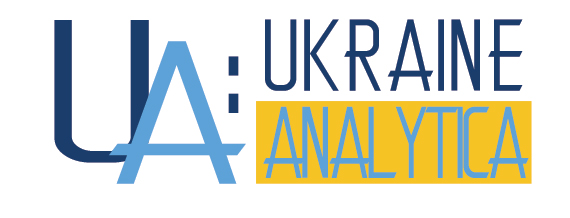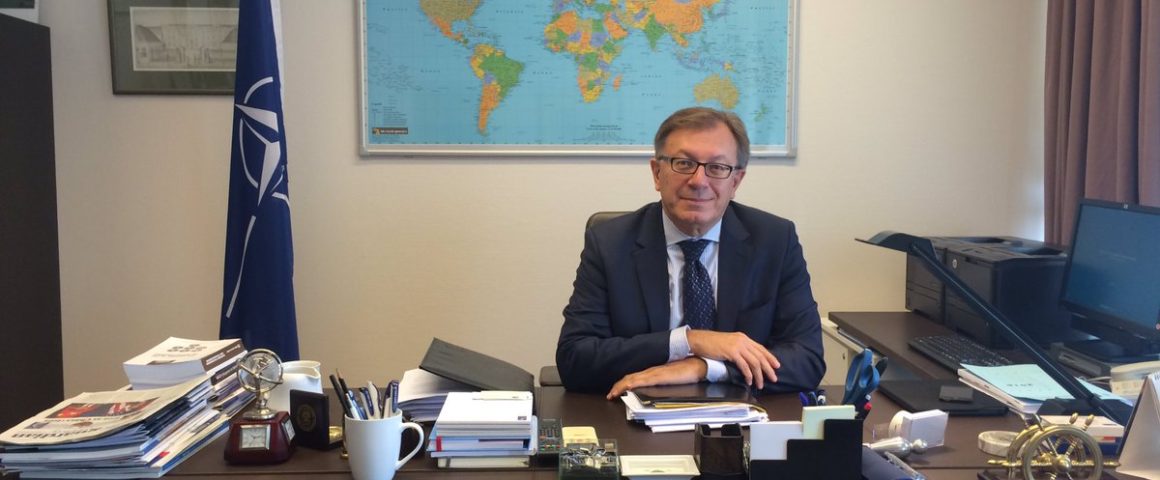Interview with Ambassador Tacan Ildem
NATO Assistant Secretary General for Public Diplomacy
What Are the Top Priorities of NATO Transformation after the Brussels Summit?
At the NATO Brussels Summit this July, the Allies took important decisions to strengthen NATO’s deterrence and defence, to step up the fight against terrorism, and to ensure fairer burden sharing among all Allies. These decisions were in line with previous NATO summits – Wales in 2014 and Warsaw in 2016 – where the Alliance addressed the needs to meet the new security challenges of today, in particular the revisionist Russia in the East and instability emanating from the South.
What it means in concrete terms is raising the readiness of our forces, increasing our ability to move them across the Atlantic and within Europe, modernizing our command structure, and setting up a new cyber operations centre and counter-hybrid support teams.
But it is also about strengthening our neighbourhood – projecting stability beyond our borders: by sustaining our financial support to the Afghan National Security Forces and our training mission in Afghanistan; launching a training mission in Iraq; providing more support to countries like Jordan and Tunisia, strengthening their ability to fight terrorism. Of course, continue assisting our close partners such as Ukraine and Georgia and closely cooperating with Finland and Sweden.
Keeping NATO’s door open to new members is an additional important decision – last year Montenegro became the 29th member; this summer the Allies invited Skopje to start the accession talks and confirmed the 2008 Bucharest Summit decision that Ukraine and Georgia will become members one day.
The summit has shown that, as the world changes, Europe and North America stand together and act together in NATO.
NATO has been transforming since the end of the Cold War. Following Russia’s aggressive actions against Ukraine and the illegal and illegitimate annexation of Crimea, NATO undertook the biggest adaptation of its collective defence since the end of the Cold War. NATO had no plans to deploy forces in the Eastern part of the Alliance before Russia’s illegal and illegitimate annexation of Crimea.
NATO has responded in a measured, defensive, and proportionate way to Russia’s use of military force against its neighbours.
The Readiness Action Plan was launched at the NATO Summit in Wales in 2014 as a major driver for change in the Alliance’s deterrence and defence posture. It was initiated to ensure the Alliance is ready to respond swiftly and firmly to new security challenges from the East and from the South. Building up on this initiative, at the Warsaw Summit, further measures were adopted – such as NATO’s Enhanced Forward Presence, with rotational deployments of four battle-groups to Poland and the three Baltic States, and Tailor Forward Presence in the South-east of our Allied territory, including increasing naval presence and military exercises in the Black Sea. At the Brussels Summit this year, NATO leaders agreed on a NATO Readiness Initiative, the so-called “Four Thirties”. The Allies committed, by 2020, to having 30 mechanised battalions, 30 air squadrons, and 30 combat vessels, ready to use within 30 days or less. These forces can be made available to NATO for rapid reinforcement during a crisis.
Our readiness is also demonstrated through increase in the number of our military exercises. In October, NATO conducted its biggest military exercise since the end of the Cold War – Trident Juncture in Norway with 50,000 troops. It was an immense logistical undertaking: moving 65 ships, 250 aircrafts, and 10,000 vehicles from as far as California or Turkey to Norway. The exercise was a demonstration of NATO’s adaption and resolve.
Is it Time to Review NATO’s Approach to Partnerships?
NATO has invested more than two decades in building strong partnerships. One of the main pillars defined in NATO’s Strategic Concept is Cooperative Security. This important pillar remains as important as ever – in view of the complexity of security threats our Allies and partners are faced with.
We have several partnership frameworks, including the Partnership for Peace, the Mediterranean Dialogue, the Istanbul Cooperation Initiative, and our Partners across the Globe. In addition, we have a number of special partnerships, for example, the Distinctive Partnership with Ukraine.
We cooperate with our partner countries through a mix of policies, programmes, action plans, and other arrangements. Many tools are focused on the important priorities of interoperability and building capabilities, and supporting defence and security-related reform.
Many of our partners have contributed to NATO’s missions and operations; they stood shoulder to shoulder with Allied troops in Afghanistan, KFOR, or our anti-piracy operation off the Horn of Africa. Ukraine has been an outstanding contributor to NATO operations and has contributed at some point to all NATO operations – from the Balkans to Afghanistan – and we are very much grateful for that.
Of particular importance is our partnership with the European Union. In the margins of the Brussels Summit, the NATO Secretary General and the Presidents of the European Council and the European Commission signed a new declaration on NATO-EU cooperation, demonstrating our desire to deepen cooperation. Over the past two years, NATO and the EU have achieved an unprecedented level of cooperation. We work together on maritime security, countering hybrid threats, and responding to the refugee and migrant crisis. We also exchange real-time warnings on cyber-attacks and participate more in each other’s exercises. Moreover, we are now stepping up our cooperation on cyber defence, military mobility, and in countering hybrid threats.
How Prepared Is NATO For the New Threats and Challenges, or Is It Still the Time of Learning Lessons of the Past?
Just as modernizing to face conventional military threats, NATO needs to be prepared to face the non-conventional asymmetric threats as well. Faced with hybrid threats and disinformation, NATO Allies are adapting to be able to defend and deter against them equally. These range from the proliferation of weapons of mass distraction to cyber and energy security challenges.
In the last few years, NATO Allies took important decisions to strengthen NATO capabilities in countering hybrid threats – strengthening its cyber defence capabilities, the resilience of its networks and infrastructure, and sharpening early warning systems.
NATO also supports the Allies in areas such as civil preparedness and chemical, biological, radiological, and nuclear (CBRN) incident response; critical infrastructure protection; strategic communications; protection of civilians; cyber defence; energy security; and counter-terrorism.
Last but not least, NATO has significantly increased its cooperation with partners, including Ukraine where we have been sharing experiences through the recently established NATO-Ukraine Hybrid Warfare Platform.
NATO and Ukraine: Is it Time the Distinctive Partnership to Be Upgraded?
Ukraine is one of NATO’s oldest and most important partners. Our relations date back to the early 1990s, when newly independent Ukraine joined the North Atlantic Cooperation Council (1991) and the Partnership for Peace Programme (1994). Relations were strengthened with the signing of the 1997 Charter on a Distinctive Partnership, which established the NATO-Ukraine Commission (NUC) to take cooperation forward. In 2008, the NATO-Ukraine Commission agreed to launch Ukraine’s Annual National Programme (ANP) to underpin Ukraine’s efforts to take forward the reforms aimed at implementing Ukraine’s Euro-Atlantic aspirations.
Since 2009, the ANP remains the main instrument for Ukraine to advance the reforms. Reforms continued to be necessary when Ukraine decided to take its Euro-Atlantic aspirations off the agenda in 2010, and all the more so as Ukraine now pursues its goal to meet NATO standards by 2020 with NATO support and advice. It is up to Ukraine to use the full potential of the ANP.
Our cooperation has been significantly stepped up after Russia’s aggressive actions against Ukraine in 2014. NATO and its Allies have significantly increased their practical support to Ukraine. In addition, the Allies have again and again reconfirmed their support to Ukraine’s territorial integrity and sovereignty and pledged not to ever recognise the illegal and illegitimate annexation of Crimea.
The Alliance also continues to provide political and practical support to Ukraine through more than 40 tailored support measures contained in the Comprehensive Assistance Package (CAP), adopted by the Allies at the Warsaw Summit back in 2016. It includes a range of Trust Funds, capacity-building programmes, and advisory support. Also, many NATO Allies are providing strong support in a bilateral way. The support provided to Ukraine is unprecedented. NATO activities in Ukraine cover a very wide range of areas. Much has been achieved, but we need to further intensify our efforts, in view of the challenges we are all facing.


